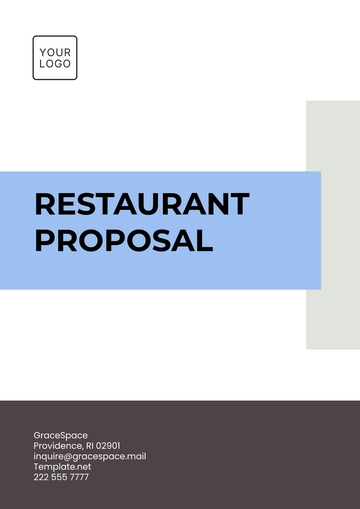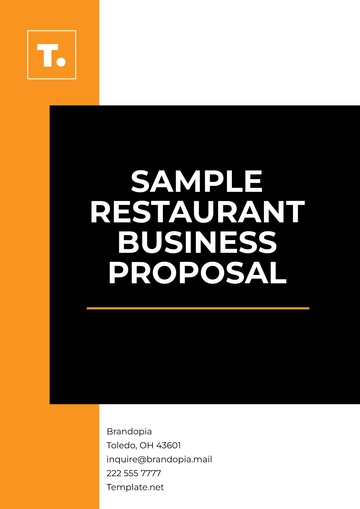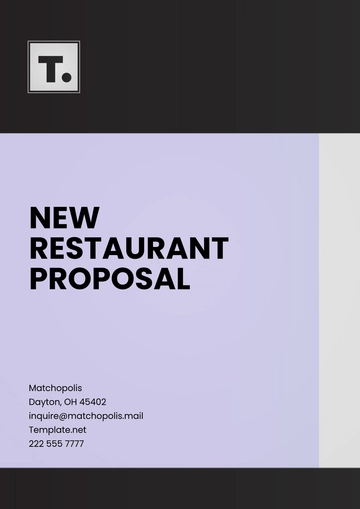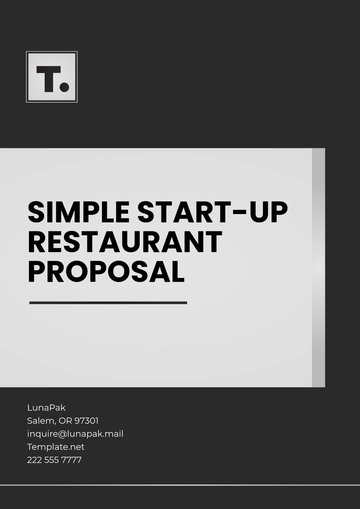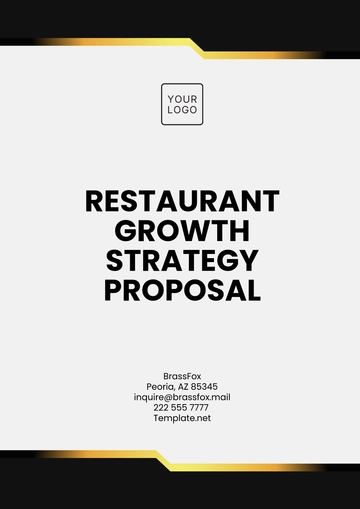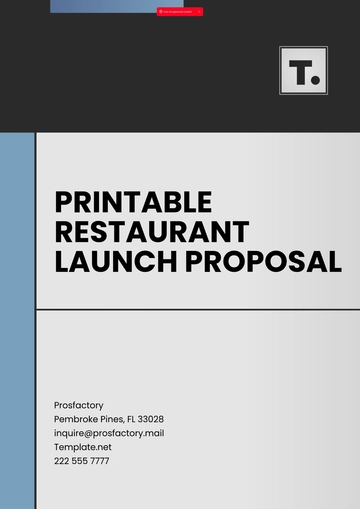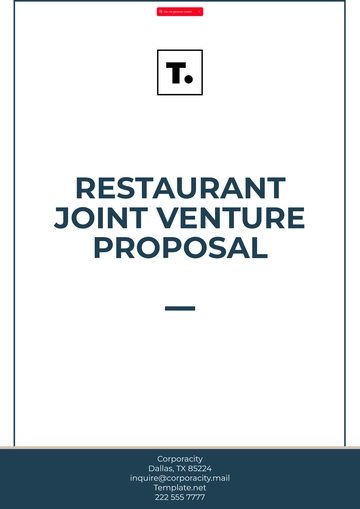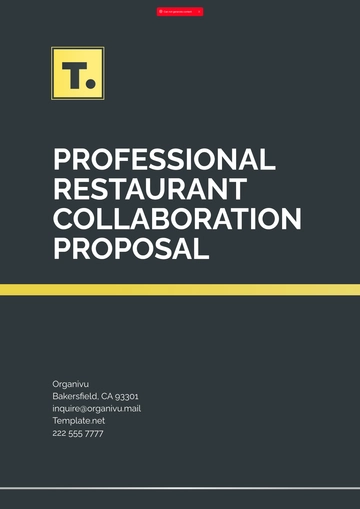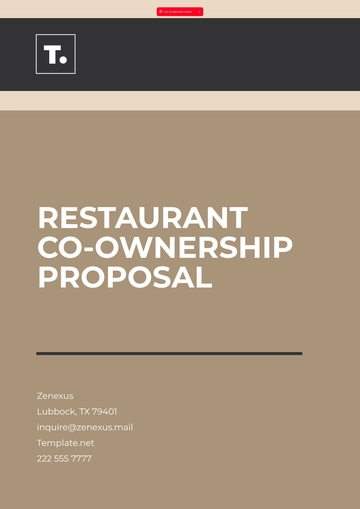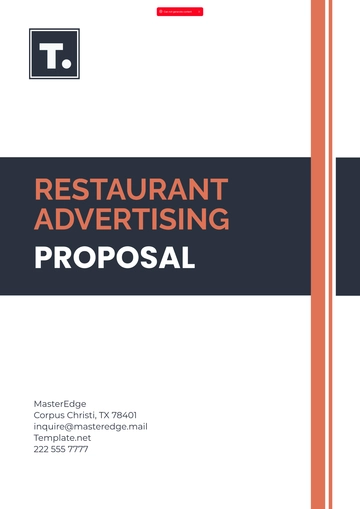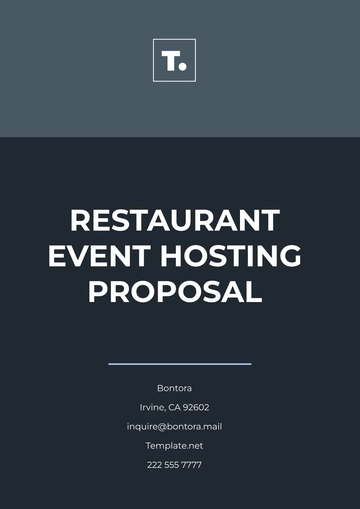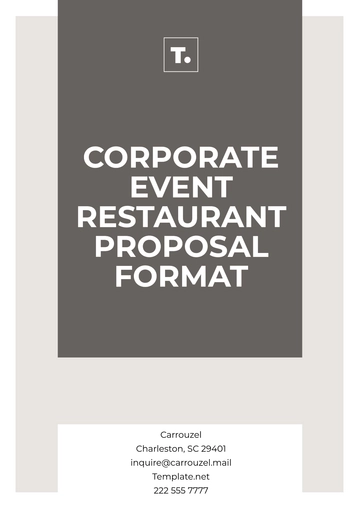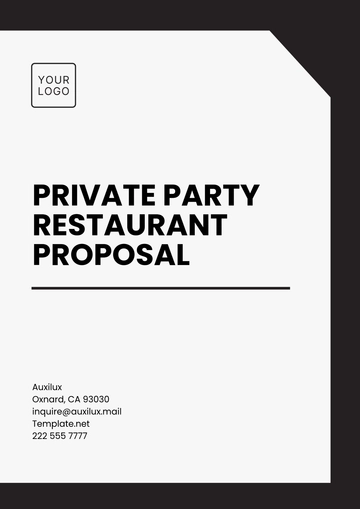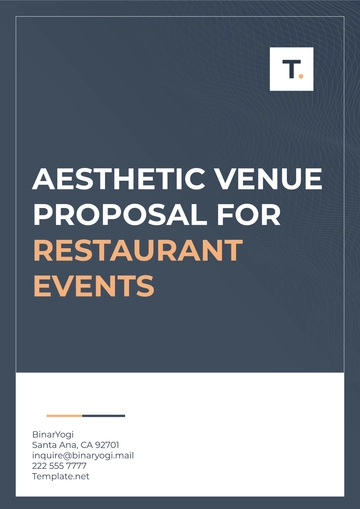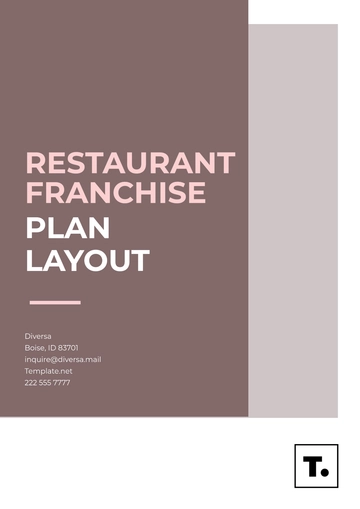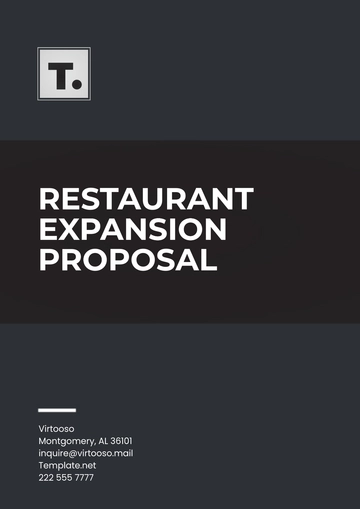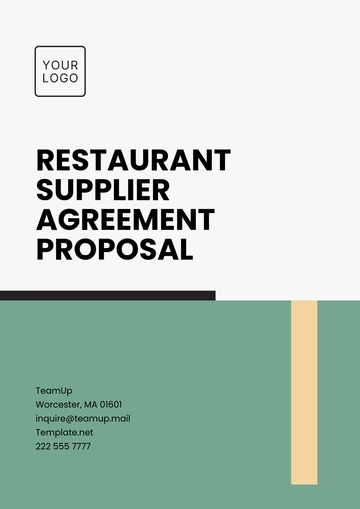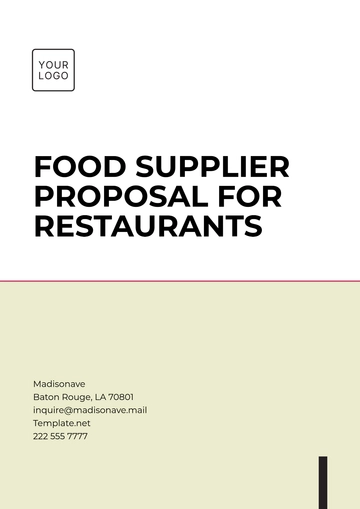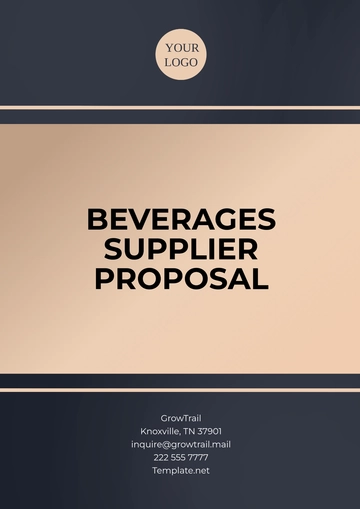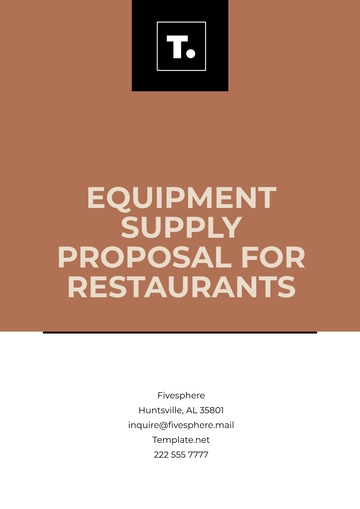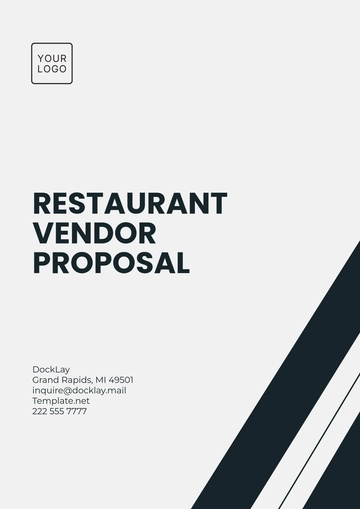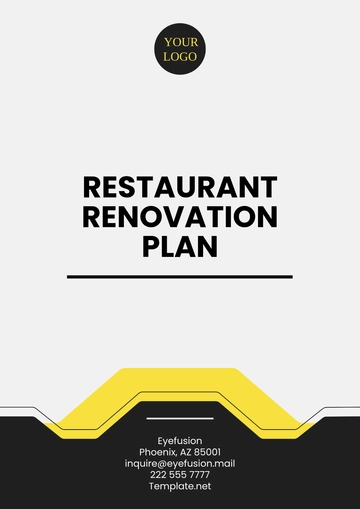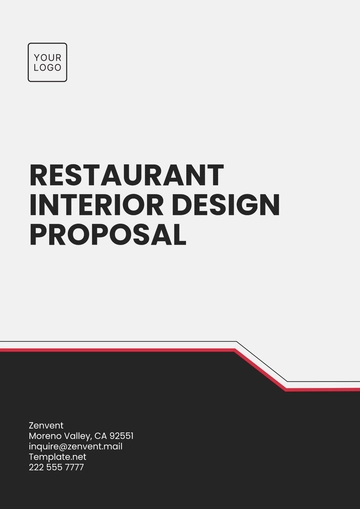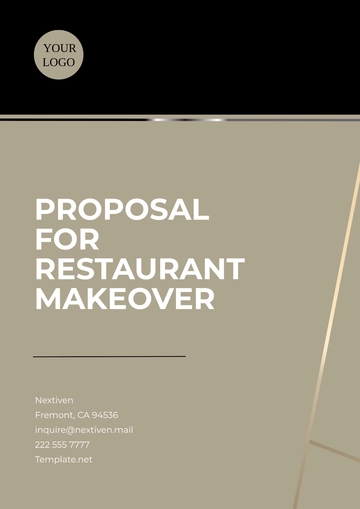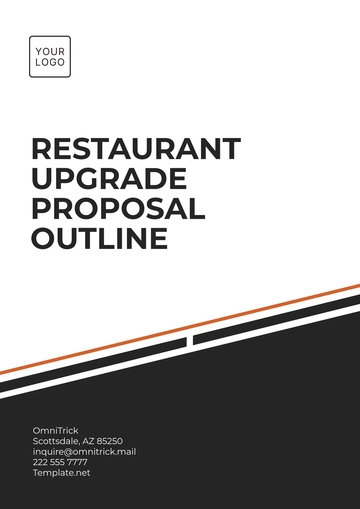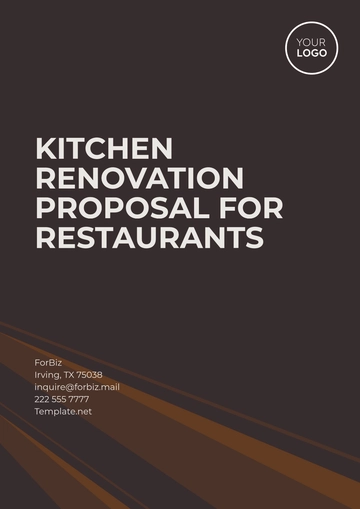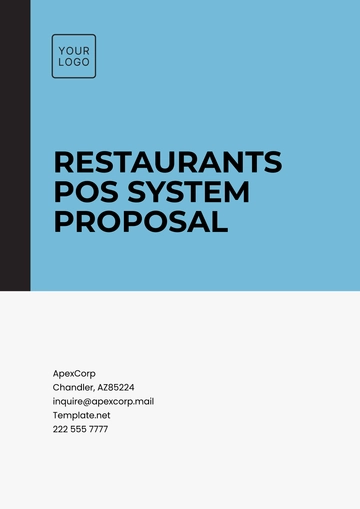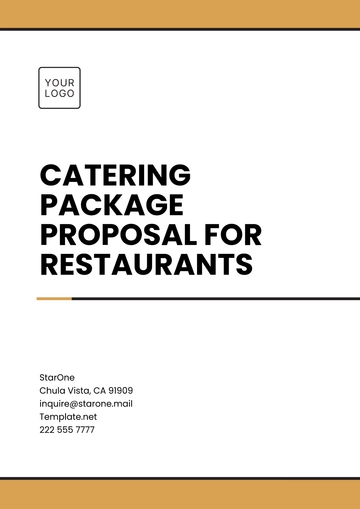Free Restaurant Growth Strategy Proposal
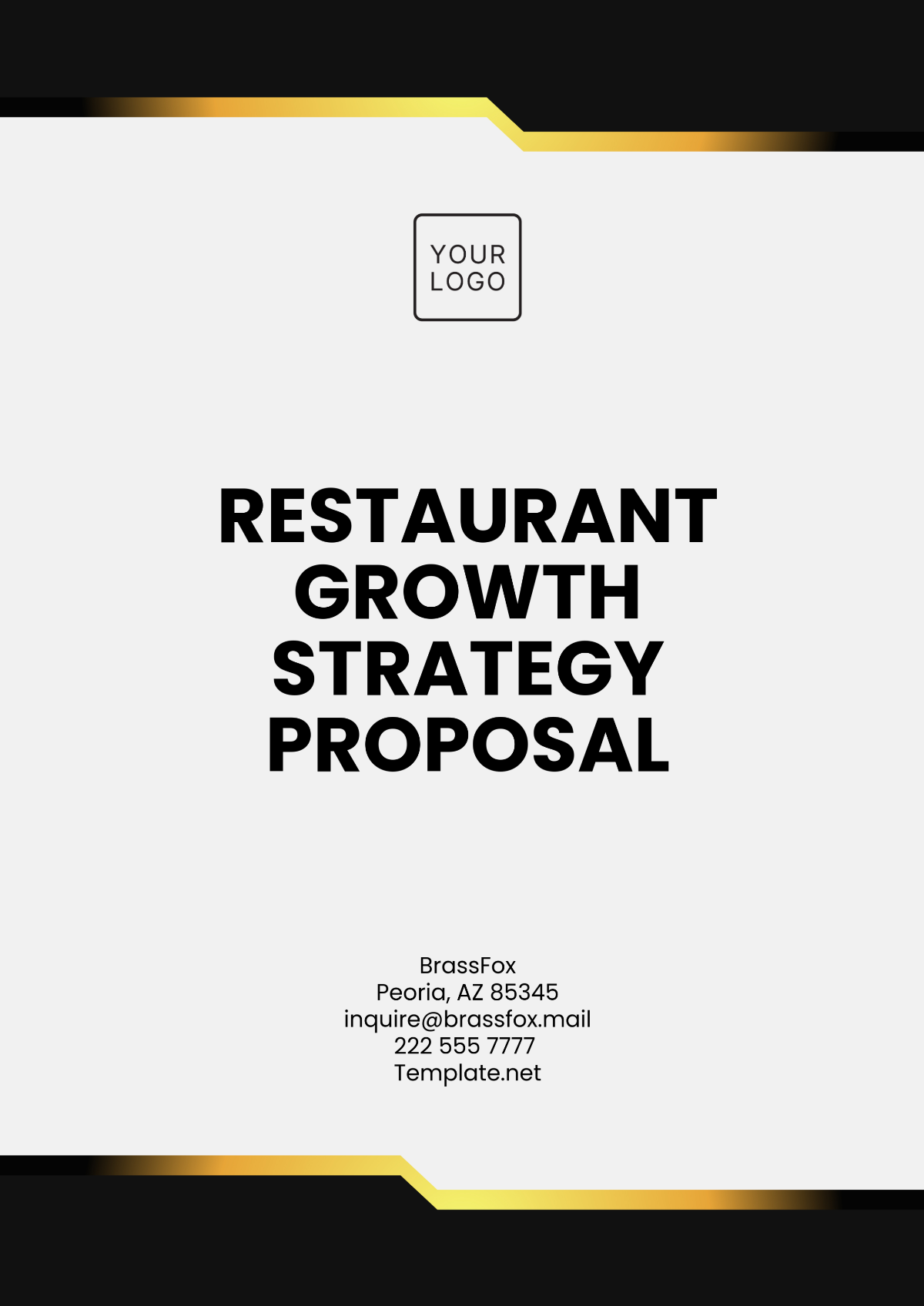
Prepared by: [Your Name]
Company: [Your Company Name]
Date: [Insert Date]
I. Executive Summary
[Your Company Name] has built a solid foundation in the local market, offering exceptional Italian cuisine and a memorable dining experience. To capitalize on this success, this growth strategy proposal outlines a plan to increase market share, enhance brand visibility, and boost revenue.
This strategy focuses on expanding into new markets, optimizing operational efficiency, leveraging marketing innovations, and fostering customer loyalty. With an investment of $200,000 over the next 18 months, [Your Company Name] is poised to achieve a projected 40% revenue increase and establish itself as a leading dining destination.
II. Objectives
Increase customer base by 30% within the next 12 months.
Open two new restaurant locations in high-potential areas within 18 months.
Implement a customer loyalty program to boost repeat business by 25%.
Achieve a 15% increase in operational efficiency through technology adoption and staff training.
III. Market Analysis
Industry Trends:
Increasing demand for unique dining experiences and diverse cuisine.
Growth in online ordering and delivery services, driven by convenience-focused customers.
The rise of health-conscious dining and sustainable practices.
Target Market Expansion:
Current primary demographic: Ages 25–45, urban professionals, and families.
New target segments: High-income consumers and corporate clientele.
Competitive Landscape:
[Your Company Name] stands out due to its premium quality, excellent service, and strong local reputation. Expanding into underserved neighborhoods will reduce competition and maximize market potential.
IV. Growth Strategies
1. Market Expansion:
New Locations: Identify two high-traffic areas with limited competition and a high density of target demographics.
Pop-Up Events: Host events in nearby cities to gauge interest and build anticipation for new openings.
2. Digital Transformation:
Launch an updated website with an integrated online ordering system.
Develop a mobile app offering loyalty rewards, promotions, and easy reservations.
Partner with popular delivery platforms to capture the growing online ordering segment.
3. Brand Building:
Develop a strong social media presence with engaging content, influencer partnerships, and customer testimonials.
Organize community events such as food festivals or charity dinners to enhance brand reputation.
Launch a PR campaign featuring the restaurant’s story, chefs, and signature dishes.
4. Menu Innovation:
Add new dishes catering to evolving dietary trends, such as plant-based and gluten-free options.
Introduce seasonal menus to keep offerings fresh and exciting.
Host chef’s table nights to provide exclusive dining experiences.
5. Customer Loyalty and Retention:
Implement a rewards program with points redeemable for discounts or free meals.
Gather and act on customer feedback through surveys and reviews.
Surprise regular customers with personalized offers and birthday discounts.
6. Operational Efficiency:
Invest in restaurant management software to streamline inventory, staffing, and sales tracking.
Conduct regular staff training to improve service quality and operational consistency.
Optimize supplier contracts to reduce costs without compromising quality.
V. Financial Overview
Investment Breakdown:
Category | Cost (USD) |
|---|---|
New Location Setup | $100,000 |
Digital Transformation | $50,000 |
Marketing and PR Campaigns | $25,000 |
Staff Training and Development | $15,000 |
Operational Enhancements | $10,000 |
Revenue Projections:
Year 1 Growth: 20% increase, reaching $800,000 in annual revenue.
Year 2 Growth: 40% increase, reaching $1,200,000 in annual revenue.
VI. Timeline
Milestone | Timeline |
|---|---|
Launch Loyalty Program | Month 1–3 |
Secure Locations for Expansion | Month 3–6 |
Complete Digital Transformation | Month 6 |
Open First New Location | Month 9 |
Conduct Marketing Campaign | Month 9–12 |
Open a Second New Location | Month 15–18 |
VII. Key Performance Indicators (KPIs)
Monthly revenue growth percentage.
Customer retention rate through loyalty program metrics.
Website and app user engagement statistics.
Customer satisfaction ratings via reviews and surveys.
Operational cost reductions achieved.
VIII. Risk Management
Identified Risks:
Delays in new location setup.
Market resistance in new areas.
Supply chain disruptions.
Mitigation Strategies:
Create contingency plans with alternative suppliers and contractors.
Conduct thorough market research before expansion.
Allocate a 10% buffer in the budget for unexpected challenges.
IX. Conclusion
[Your Company Name] is in a prime position to leverage its strong foundation and achieve substantial growth. By expanding its reach, embracing digital solutions, and enhancing customer loyalty, [Your Company Name] can significantly boost profitability and brand presence. With the outlined strategies and your support, we are confident in achieving these ambitious goals and delivering exceptional dining experiences to even more customers.
- 100% Customizable, free editor
- Access 1 Million+ Templates, photo’s & graphics
- Download or share as a template
- Click and replace photos, graphics, text, backgrounds
- Resize, crop, AI write & more
- Access advanced editor
You may also like
- Business Proposal
- Research Proposal
- Proposal Request
- Project Proposal
- Grant Proposal
- Photography Proposal
- Job Proposal
- Budget Proposal
- Marketing Proposal
- Branding Proposal
- Advertising Proposal
- Sales Proposal
- Startup Proposal
- Event Proposal
- Creative Proposal
- Restaurant Proposal
- Blank Proposal
- One Page Proposal
- Proposal Report
- IT Proposal
- Non Profit Proposal
- Training Proposal
- Construction Proposal
- School Proposal
- Cleaning Proposal
- Contract Proposal
- HR Proposal
- Travel Agency Proposal
- Small Business Proposal
- Investment Proposal
- Bid Proposal
- Retail Business Proposal
- Sponsorship Proposal
- Academic Proposal
- Partnership Proposal
- Work Proposal
- Agency Proposal
- University Proposal
- Accounting Proposal
- Real Estate Proposal
- Hotel Proposal
- Product Proposal
- Advertising Agency Proposal
- Development Proposal
- Loan Proposal
- Website Proposal
- Nursing Home Proposal
- Financial Proposal
- Salon Proposal
- Freelancer Proposal
- Funding Proposal
- Work from Home Proposal
- Company Proposal
- Consulting Proposal
- Educational Proposal
- Construction Bid Proposal
- Interior Design Proposal
- New Product Proposal
- Sports Proposal
- Corporate Proposal
- Food Proposal
- Property Proposal
- Maintenance Proposal
- Purchase Proposal
- Rental Proposal
- Recruitment Proposal
- Social Media Proposal
- Travel Proposal
- Trip Proposal
- Software Proposal
- Conference Proposal
- Graphic Design Proposal
- Law Firm Proposal
- Medical Proposal
- Music Proposal
- Pricing Proposal
- SEO Proposal
- Strategy Proposal
- Technical Proposal
- Coaching Proposal
- Ecommerce Proposal
- Fundraising Proposal
- Landscaping Proposal
- Charity Proposal
- Contractor Proposal
- Exhibition Proposal
- Art Proposal
- Mobile Proposal
- Equipment Proposal
- Student Proposal
- Engineering Proposal
- Business Proposal
